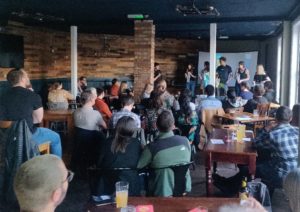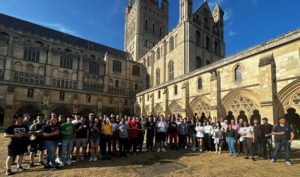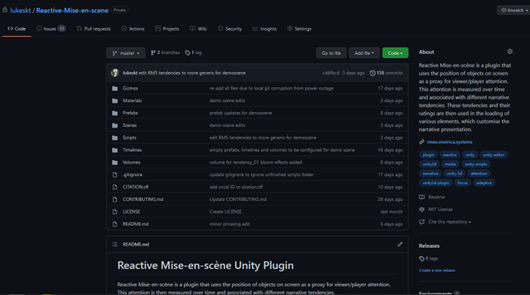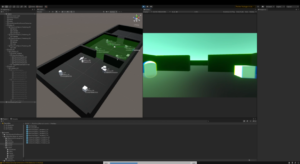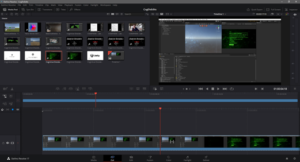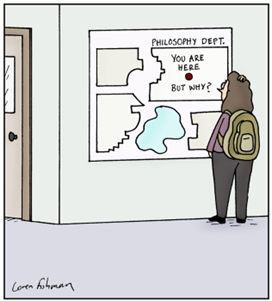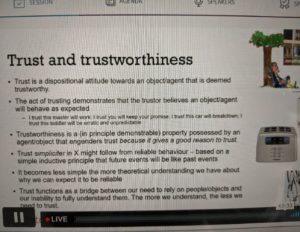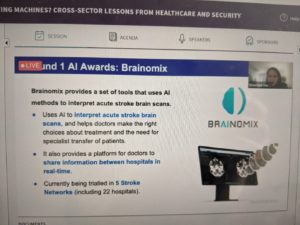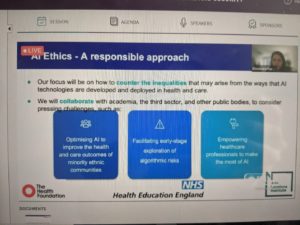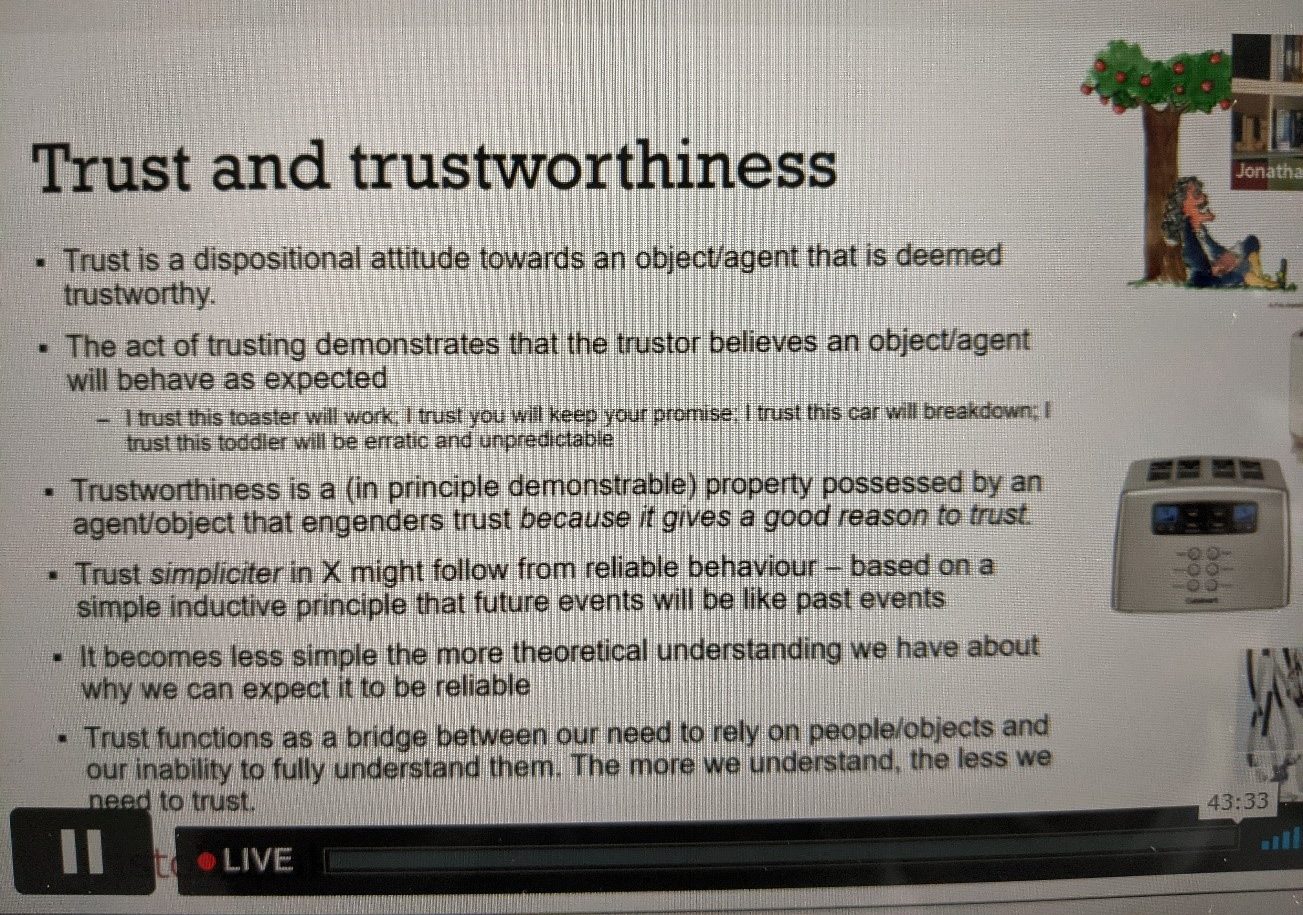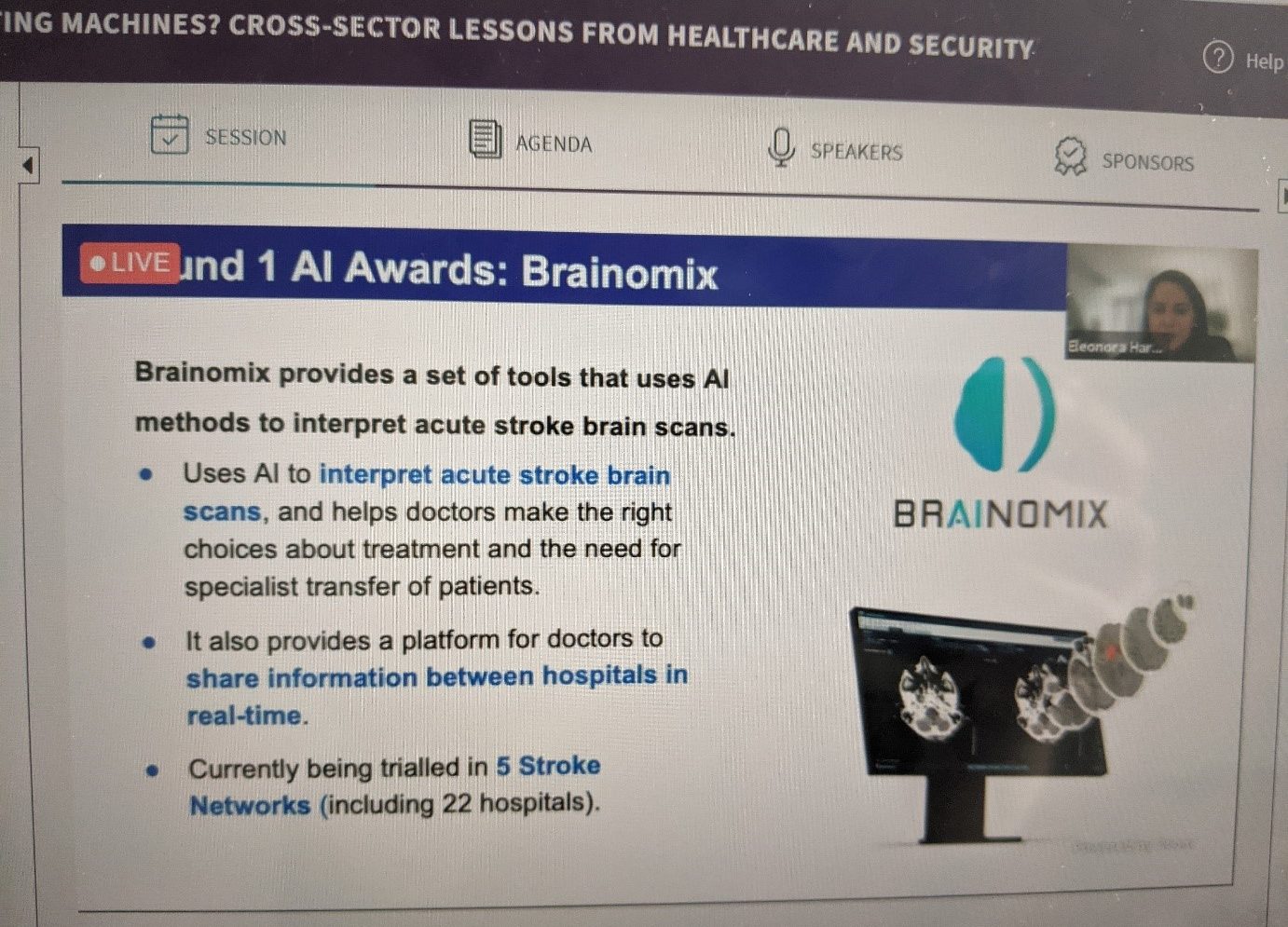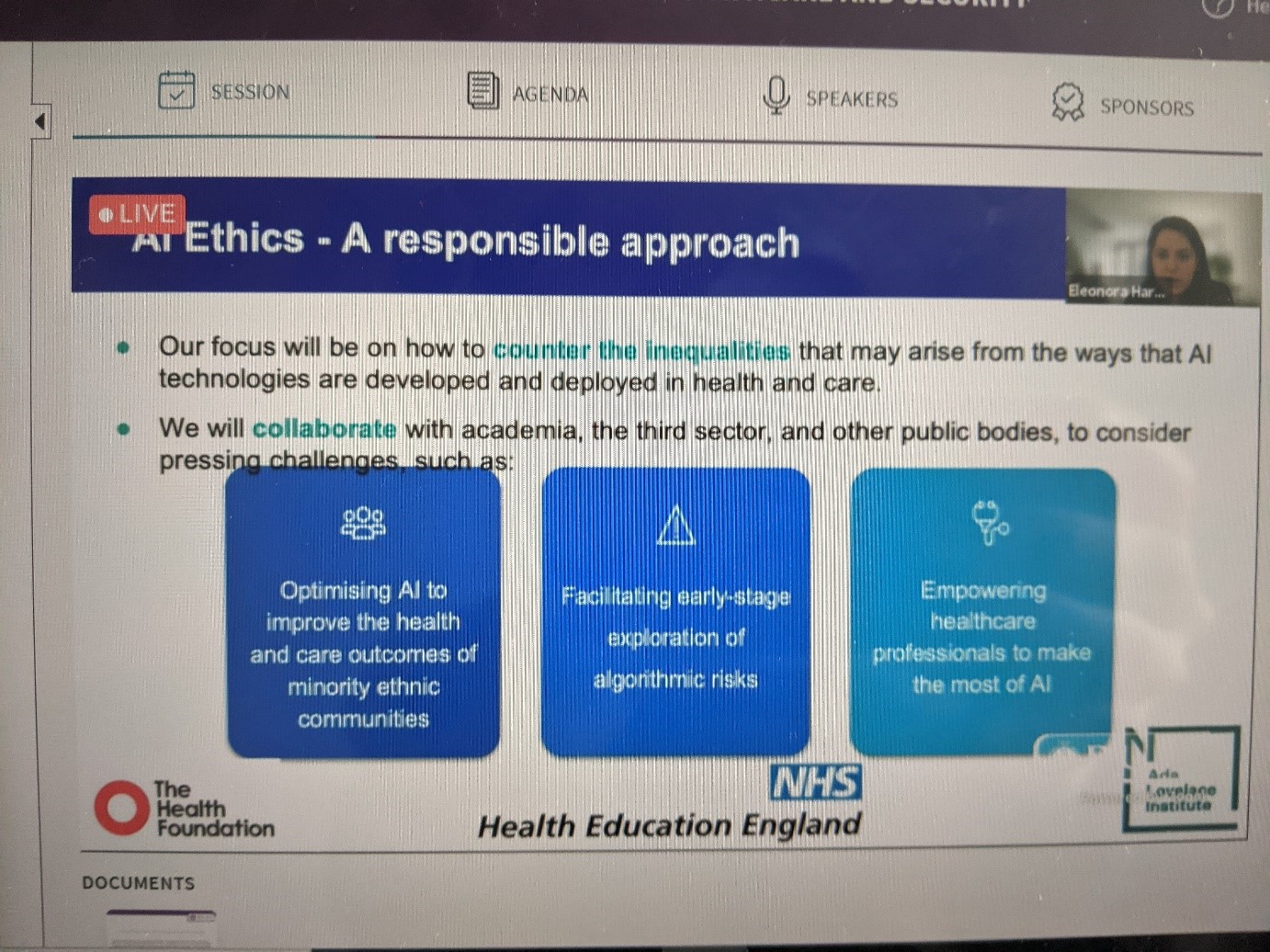post by Shazmin Majid (2018 cohort)
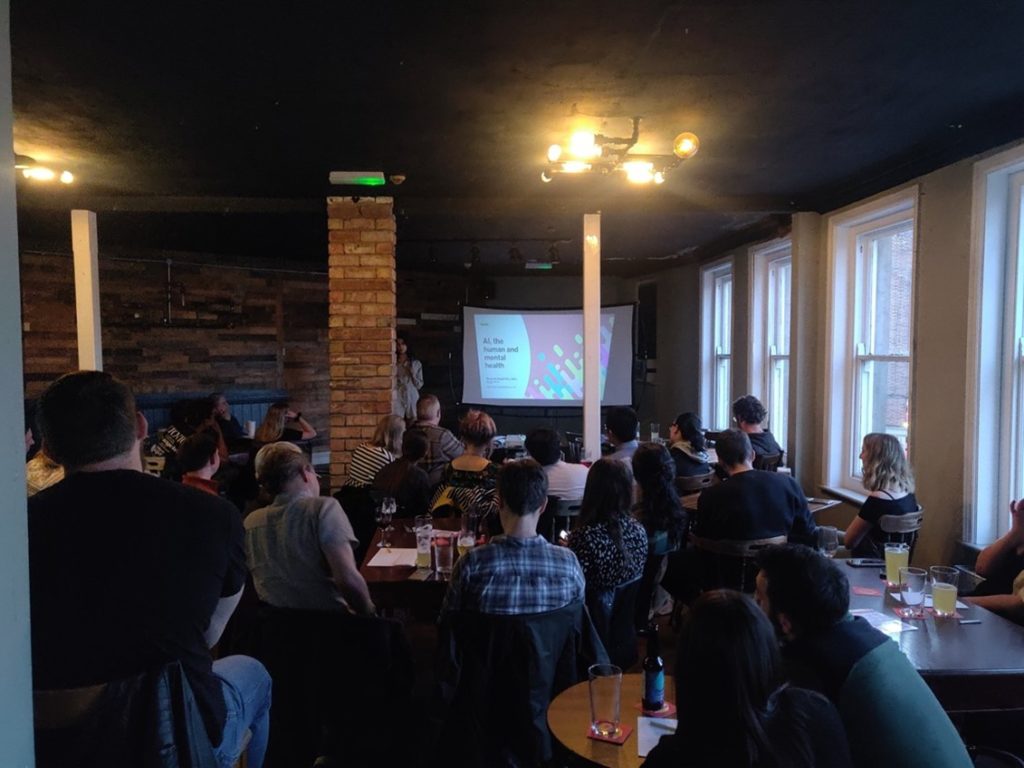
Venue:
Pint of Science 2022
Bunkers Hill, Nottingham
I delivered a talk about AI, mental health and the human at Pint of Science 2022 this year which had the theme “A Head Start of Health”. Pint of Science is a grassroots non-profit organisation that runs a worldwide science festival and brings researchers to a local pub/café/space to share their scientific discoveries with you, where no prior knowledge is needed. There are over 24,000 attendees in the U.K with over 600 events in over 45 cities. There were three talks at the time focusing on the theme of mental health.
Structure of the talk:
-
- What is AI
- How AI is being used in mental health
- AI and mental health: my cool experiences
- My current issues with AI and mental health
After days of practice and even delivering the jokes on cue whilst in pj’s in the comfort of my living room, the day for presenting arrived. Those that know me, know that I’m not too shy when it comes to presenting but this felt different and I really wanted to get the crowd engaged, and practise good storytelling. I arrived on the day and was welcomed, especially by fellow Horizon-er Peter Boyes who was the one who suggested my talk to the Pint of Science crew. I learnt that I would be the last talk and I did something I have never done before, I walked up to the bar and ordered a big old pint, a packet of crisps and enjoyed the wait. Normally, I would find this process to be mildly agonising, having to wait until it’s your go. My parents have got a collection of photos of me when I was a child having to wait for a funfair ride. Let me set the scene – fists in a ball screaming at the top of my lungs. I guess that never leaves you which is why I’d much rather go first. The pint helped.
My talk aimed at providing a whistle-stop tour of the ways I’ve interacted with AI and mental health. To start off by loosely introducing AI, providing some of the state of the art ways that it’s being used, provide a summary of the ways I’ve got to engage in the sector and present what I consider to be current issues on this. I can say, this is not how it went down. I was approximately 3 slides in and then was hit with an image that’ll never leave me and this was a black screen with the text “slide show ended”. And it was right at this moment that I realised that I had sent over some butchered version of my slide show. I had only one copy of the slides which I had sent over – how could this happen! I also realised that I had saved the slideshow on my *desktop* (like, seriously, who does that!) with no remote drive links sprinkled in fairy dust to access it. A sudden wave of appreciation of being last hit me like a wave because the crowd just bobbed along as on average everyone was around 3 pints down!
Pete and I scrambled in the corner to find another presentation I could quickly deliver and we settled at an older MRL lab talk about a piece of research I had published. This piece of work explored the extent of user involvement in the design of mental health technology And lo and behold, the new structure:
The new structure of the talk
-
- Background of mental health technology
- The research questions
- The method of exploration
- Our results
- What we recommend for the future
Getting into the nitty-gritty:
-
- Background of mental health technology
Self-monitoring applications for mental health technology are increasing in numbers. The involvement of users has been informed by its long history in Human-Computer Interaction (HCI) research and is becoming a core concern for designers working in this space. The application of models of involvement, such as user-centered design (UCD), is becoming standardised to optimise the reach, adoption and sustained use of this type of technology.
-
- The research questions
This paper examined the current ways in which users are involved in the design and evaluation of self-monitoring applications, specifically for bipolar disorder by investigating three specific questions a) are users being involved in the design and evaluation of technology? b) if so, how is this happening? and lastly, c) what are the best practice ‘ingredients’ regarding the design of mental health technology?
-
- The method of exploration
To explore these practices, we reviewed available literature for self-tracking technology for bipolar disorder and made an overall assessment of the level of user involvement in design. The findings were reviewed by an expert panel, including an individual with lived experience of bipolar disorder, to form best practice “ingredients” for design of mental health technology. This combines the already existing practices of patient and public involvement and human-computer interaction to evolve from the generic guidelines of UCD to ones that are tailored towards mental health technology.
-
- Our results
For question a), it was found that out of the 13 novel smartphone applications included in this review, 4 self-monitoring applications were classified as having no mention of user involvement in the design, 3 self-monitoring applications were classified as having low user involvement, 4 self-monitoring applications were classified as having medium user involvement and 2 self-monitoring applications were classified as high user involvement. In regards to question b), it was found that despite the presence of extant approaches for the involvement of the user in the process of design and evaluation, there is large variability in whether the user is involved, how they are involved and to what extent there is a reported emphasis on the voice of the user, which is the ultimate aim of design approaches involved in mental health technology.
-
- What we recommend for the future
As per question c), it is recommended that users are involved in all stages of design with the ultimate goal to empower and create empathy for the user. Users should be involved early in the process of design and this should not just be limited to design itself, but also associated research ensuring end-to-end involvement. The communities in the healthcare-based design and human-computer interaction design need to work together to increase awareness of the different methods available and encourage the use and mixing of the methods, as well as establish better mechanisms to reach the target user group. Future research using systematic literature search methods should explore this further.
Closing remarks
Adaptability is the moral of the story here! Practice can make perfect but in the end, technology failed me even though my talk was about technology – ironically! I guess I was more proud of delivering the talk in this haphazard way, compared to if I delivered on cue like I practised. Another reflection that I made is that after 4 years of doing a PhD, it’s interesting how you can naturally talk about the topic at hand – so rambling for 20 mins just flowed. Talking about your PhD for a non-technical audience was also a very interesting experience too and a great experience to practise good storytelling.

